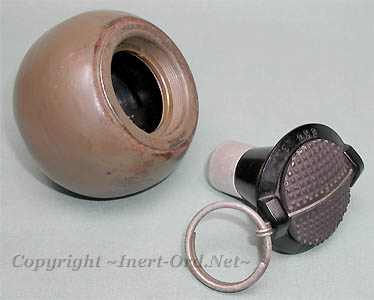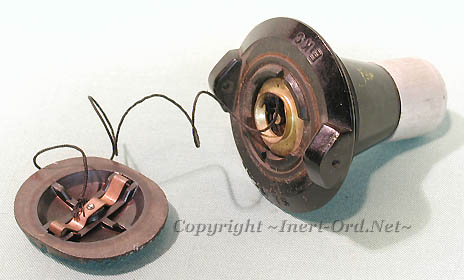

Nicknamed the "Beano", it has a smooth steel body (.04" wall thickness) with a diameter of just under three inches.
In use, it is held with the safety cap under the fingers, the pin is pulled and the grenade thrown. The grenade arms as it travels through the air. It had a 20 meter effective radius.
The Beano had problems during development. Its performance was not consistent or particularly reliable. The fuze tended to freeze up in winter conditions as well as having a nasty habit of prematurely detonating. There were numerous casualties during development and test. (Impact fuzes historically have been a difficult feature to safely incorporate into a hand grenade.)
The problems were more or less worked out and the grenade was adopted for use as the T13 in January 1944. The term "Beano" was used prior to the formal type designation. While the T13 was shipped to Europe for field evaluation, it isn't clear if it was ever used in combat, although there is unverified information it was issued in limited numbers to troops for the Normandy Invasion.

